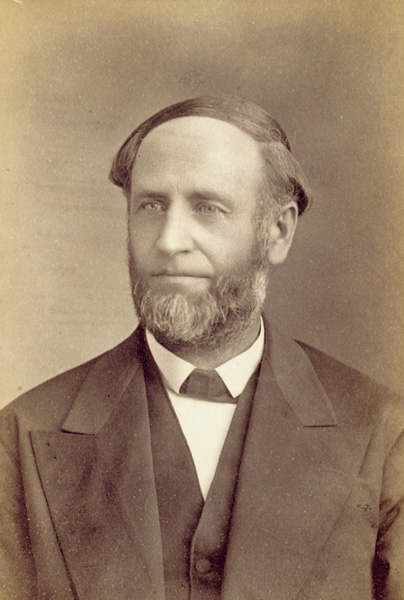
"Portrait of Bishop Milton Wright." 1883. Courtesy of Special Collections and Archives, Wright State University.
"We were lucky enough to grow up in an environment where there was always much encouragement to children to pursue intellectual interests; to investigate whatever aroused curiosity. Our curiosity might have been nipped long before it could have borne fruit."
~ Orville Wright

"Portrait of Bishop Milton Wright." 1883. Courtesy of Special Collections and Archives, Wright State University.
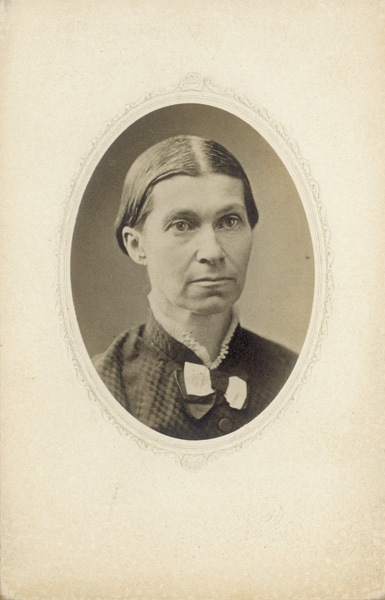
"Portrait of Susan Koerner Wright." 1876. Courtesy of Special Collections and Archives, Wright State University.
"Our interest in the subject [flight] was aroused through the reading of a book on ornithology. We could not understand that there was anything about a bird that would enable it to fly that could not be built on a larger scale and used by man."
~ Orville Wright
While working as newspaper printers, they were recognized for the design and quality of the presses they built. Using spare parts from a folding buggy top, they built a press capable of printing "1,000 sheets an hour" (Hamen, 2008).
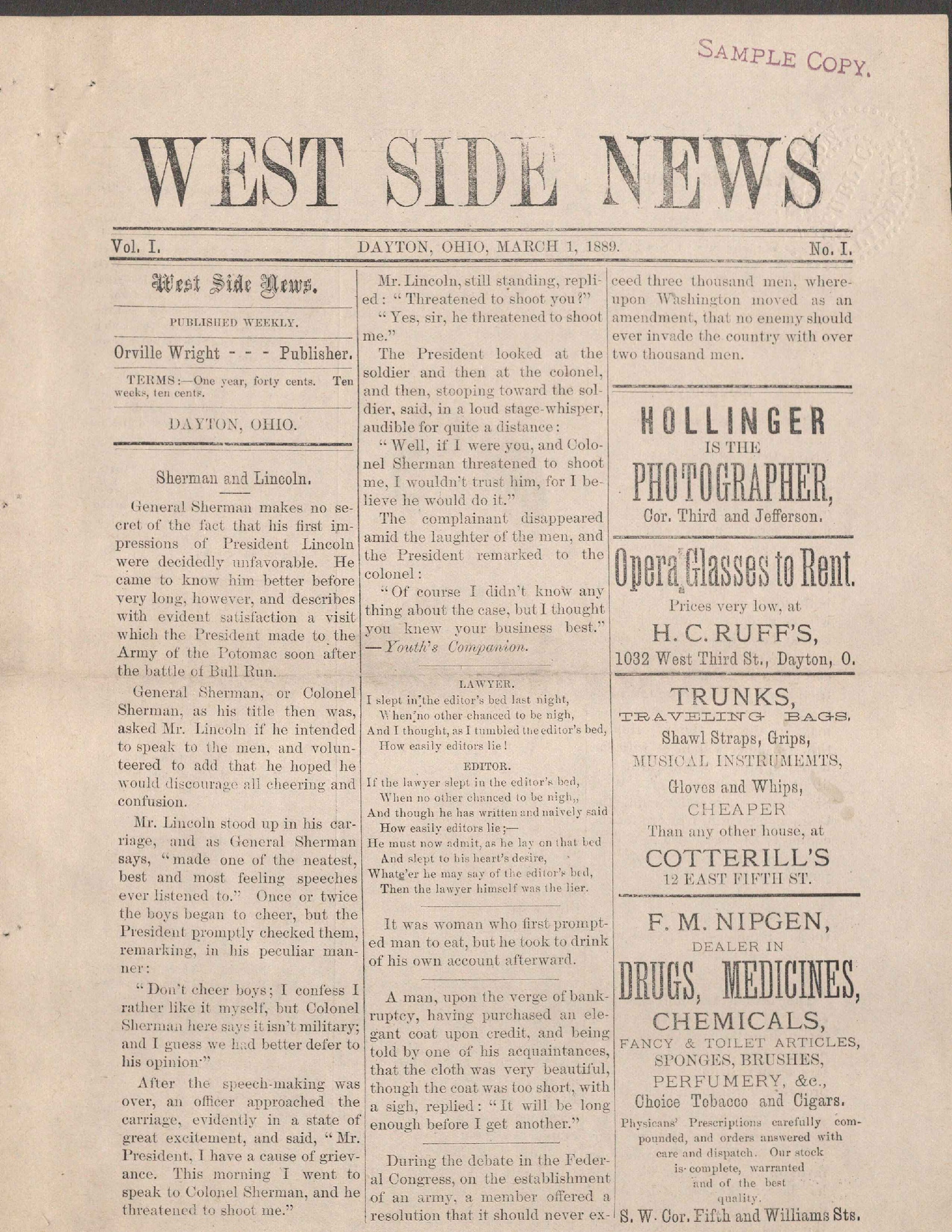
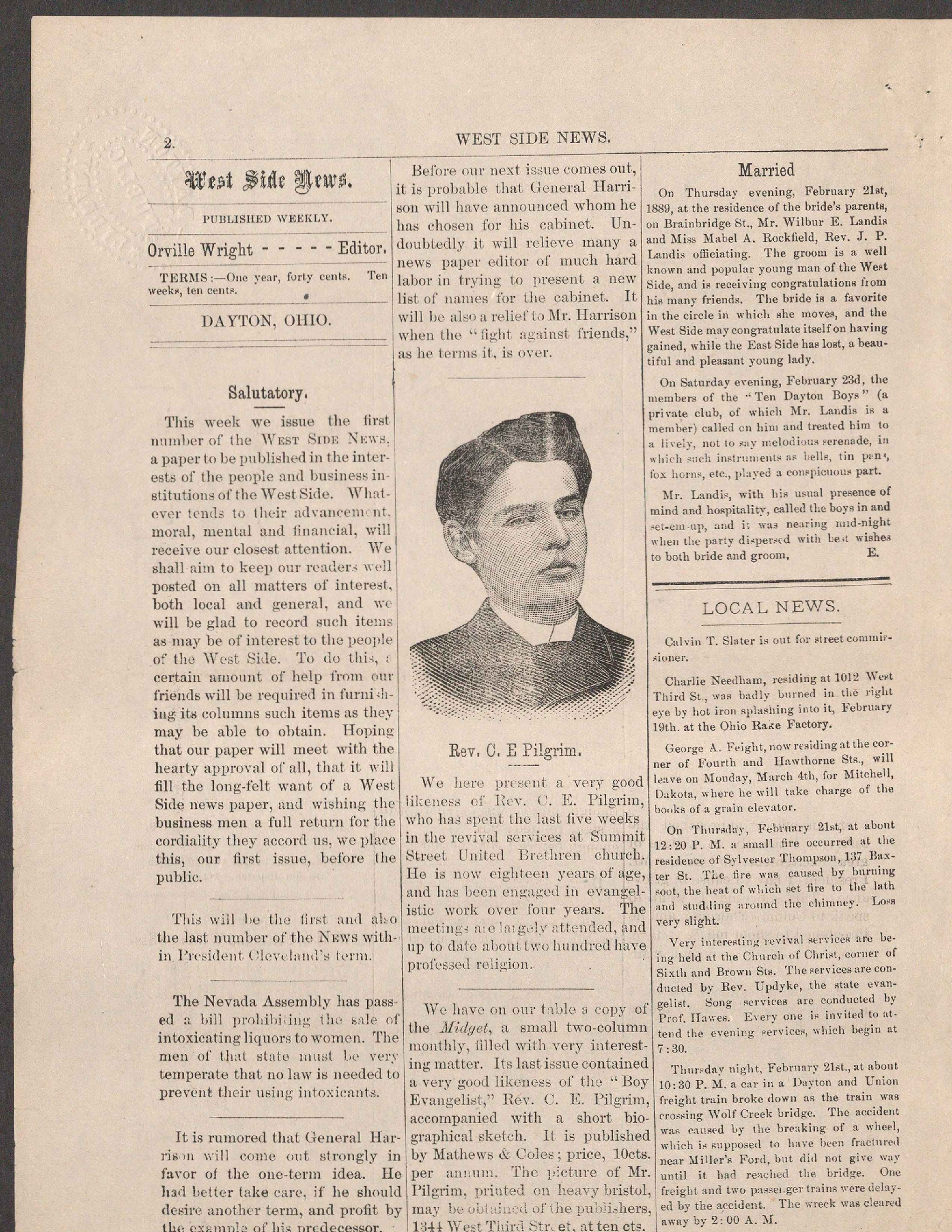
"West Side News." 1889. Courtesy of Special Collections and Archives, Wright State University.
As bicycle mechanics, they repaired, produced, and sold bicycles. They gained practical experience in the engineering process, and the profits from their jobs helped fund their aeronautical endeavors.

"Original Wright Brothers-Built Bicycle." Smithsonian Institution.
"From the time we were little children, my brother Orville and myself lived together, played together, worked together, and, in fact, thought together. We usually owned all of our toys in common, talked over our thoughts and aspirations so that nearly everything that was done in our lives has been the result of conversations, suggestions, and discussions between us."
~ Wilbur Wright
In the late-nineteenth-century, automobiles began gaining popularity but weren’t widely used until the 1920s automotive revolution. Instead, people relied on horses and buggies, but neither of these could be relied on for quick transportation for long distances. Long-distance travel was primarily covered by trains on land, and boats on water. However, these still took days to reach desired destinations.

Johnston, Frances Benjamin. 1899. Library of Congress.
Seeing that transportation dilemma, many sought to invent a faster, aerial transit. George Cayley built the first working human-carrying aircraft with fixed wings using the airfoil wing shape. He recognized the physics and aerodynamics behind flight and established the basic structure for modern planes. Despite the efforts of aeronautical pioneers, wing shapes most conducive for lift remained uncertain, and designs lacked powerful lightweight engines for propulsion and efficient mechanisms to manipulate aerial movement.
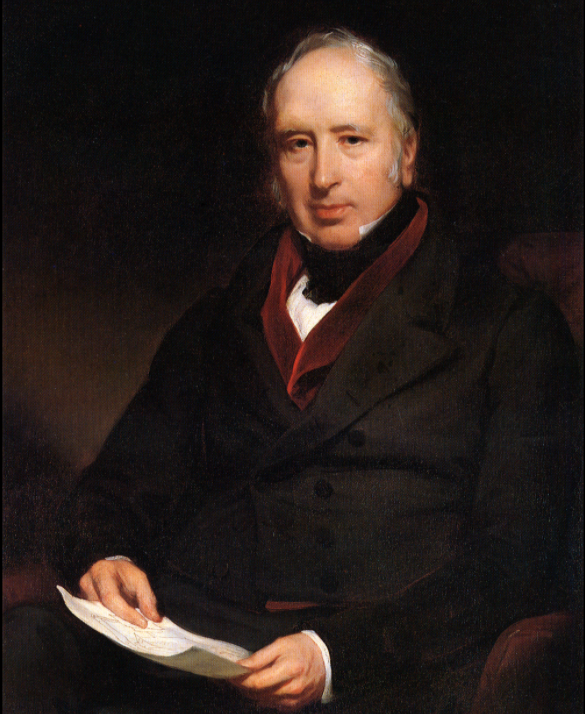
"Portrait of Sir George Cayley." Smithsonian Institution.
"I feel perfectly confident, however, that this noble art will soon be brought home to man’s general convenience, and that we shall be able to transport our-selves and families, and their goods and chattels, more securely by air than by water, and with a velocity of from 20 to 100 miles per hour."
~ George Cayley